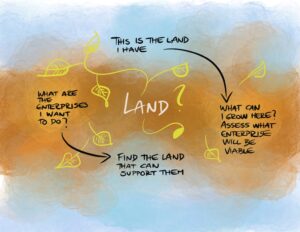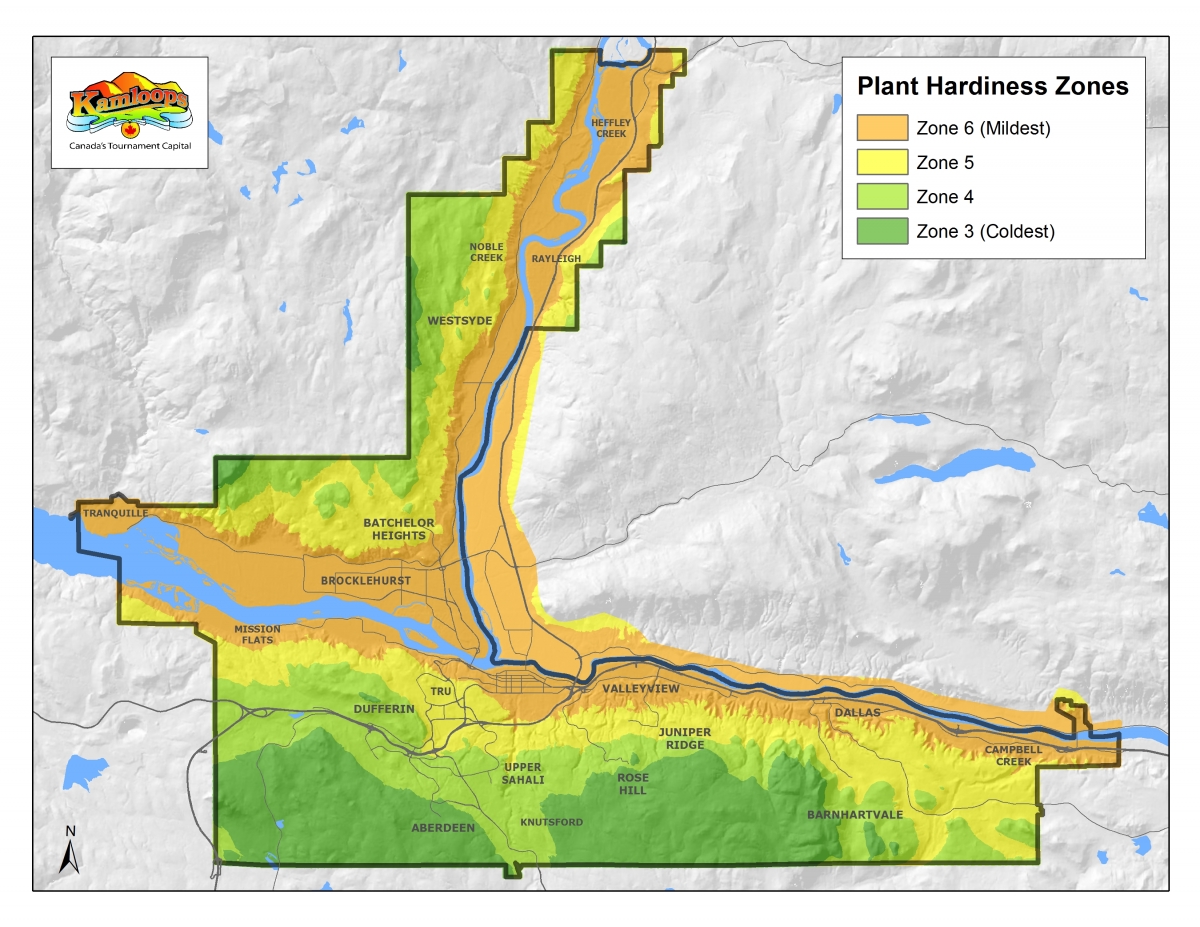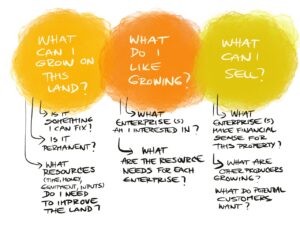1.1 Land Assessment
Looking for Land
There are two different approaches to take when you are looking for land; you can look for land to support your farming idea, or you can look for land and then come up with an idea based on what you can grow there.

If you are trying to find land, you can connect with the BC Land Matching Program by the Young Agrarians, and get in touch with the coordinator for the Okanagan-Thompson region. You should also make sure that you talk to people, build your networks, make a website or a Facebook page to get the word out that you are looking for land to farm! Here are more tips from The Market Garden.
Site Evaluation Checklist
Consider these questions when evaluating potential sites (will depend on the enterprise(s) you are planning to do):
- Determine the hardiness zone of property, and the last spring and first fall frost dates (see Climate Assessment below).
- What is the water access like? Is the water clean enough for irrigation? Is there potable water for humans and animals? Is there a functional irrigation system? If it needs repairs, do you have time/money to make them?
- Is the site accessible by vehicle all year-round?
- What is the slope and orientation of the property? Is there a lot of southern sun exposure?
- What kind of soil is it? Is it clay, sand, or silt? Is it healthy or has it been contaminated?
- Is there existing fencing? Will fencing need to be installed?
- Is there an annual flood or wildfire risk?
- What structures are on the property? Do they need repairs? Are they close to the garden or animal fields?
- Does the site have electricity?
- Is there a customer base (farmers’ market, restaurants, CSA members) for local produce or meat? Is there room for new producers?
- How far is it from a central market location? This will give you the travel time each week.
Lease Considerations:
- What areas of the field do you have access to?
- Will the land-owner sign a lease for more than 5 years?
- Will you have access to the structures on the property?
- Is there equipment that you can use?
- What is the history of the property? How has the land been used historically?
- Is there a building or temporary structure for me to live in? If not, consider your living situation and travel distance to the farm.
Climate Assessment
The climate will be different depending on the location of your farm, so look up the frost dates and plant hardiness zones for your area to help you figure out what crops you can grow, and which ones might need to be in a greenhouse if your property is cooler. The frost dates will give you information about when you can plant your seeds or transplants outside after the last frost, and when everything needs to be harvested before the first frost.
- BC First Frost Dates
- BC Last Frost Dates
- Plant hardiness zones
- West Coast Seeds: South Central Planting Chart

Self Assessment
Think about these questions as you are looking for land; the property will determine what you can grow and the distance to your customers, so consider these ideas in your planning process:

Lease Agreement
If you are renting or leasing your land, setting up a lease agreement is strongly recommended. Once you have the land, you will need to write a lease agreement with the land owner. Young Agrarians has a wonderful Transition Toolkit for this process, that takes you through each step of the transition. Make sure you have something in writing if you are renting or leasing the property, so that if there are any disputes, you will have a document to refer to.
